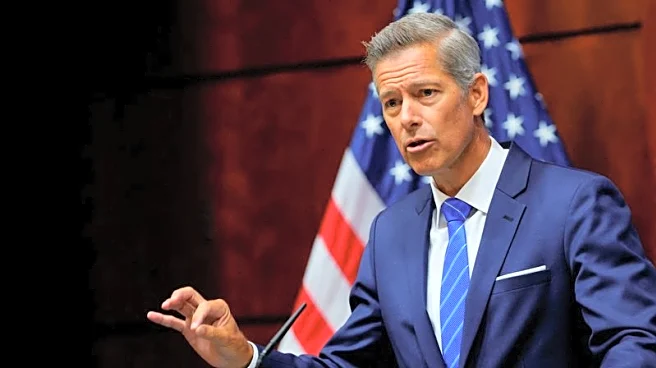What's Happening?
The United States Golf Association (USGA) is seeking a $5 million grant from the state of Pennsylvania to construct a new bridge at Oakmont Country Club. The proposed bridge would span the Pennsylvania Turnpike,
aiming to separate vehicle and construction traffic from golf tournament spectators. The USGA emphasizes that this infrastructure will enhance the fan experience, accessibility, and capacity at the venue. Oakmont is scheduled to host the U.S. Women's Open in 2028 and the men's U.S. Open in 2033. Pennsylvania Governor Josh Shapiro highlighted the cultural and economic significance of Oakmont, noting that golf contributes $6 billion to the state's economy.
Why It's Important?
The construction of the new bridge at Oakmont Country Club is significant for several reasons. It represents an investment in infrastructure that will improve the logistics and safety of major golf tournaments, potentially attracting more visitors and boosting local tourism. The economic impact of golf in Pennsylvania is substantial, with the sport generating billions in revenue. By enhancing the venue's accessibility and capacity, the USGA aims to maintain Oakmont's reputation as a premier golfing destination, which could further stimulate economic activity in the region. The grant request also underscores the importance of public-private partnerships in supporting large-scale sporting events.
What's Next?
If the grant is approved, construction of the bridge will likely commence in preparation for the upcoming tournaments. The USGA and state officials may collaborate on further infrastructure improvements to support the events. Stakeholders, including local businesses and tourism operators, are expected to monitor developments closely, as enhanced facilities could lead to increased visitor numbers and economic benefits. The decision on the grant will be pivotal in shaping the future of Oakmont as a leading venue for major golf championships.
Beyond the Headlines
The request for state funding highlights broader discussions about the role of government in supporting sports infrastructure. It raises questions about the allocation of public funds for private venues and the potential returns on such investments. Additionally, the project could set a precedent for future collaborations between sports organizations and state governments, influencing how infrastructure projects are funded and executed in the realm of professional sports.












